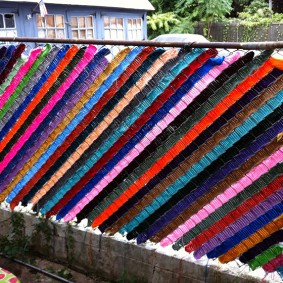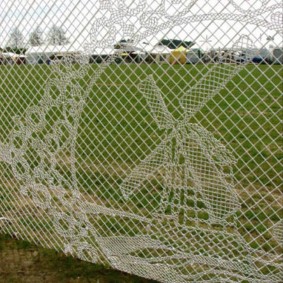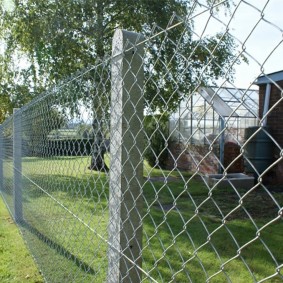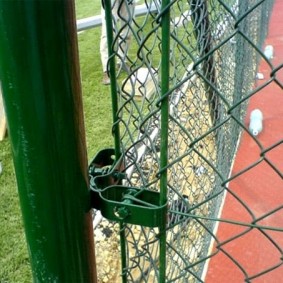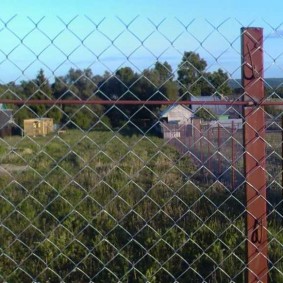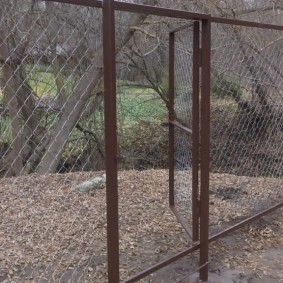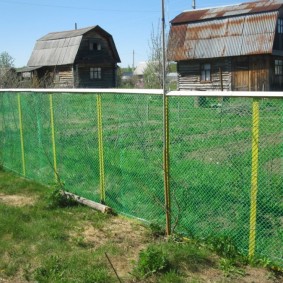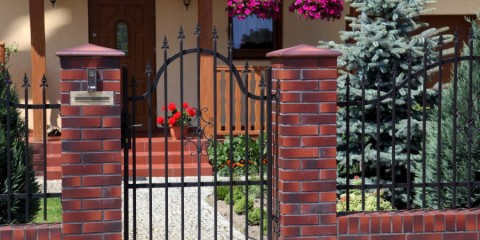 Landscape design
Lighting options for a country house and a summer cottage
Landscape design
Lighting options for a country house and a summer cottage
Fencing a site is necessary for many reasons, and safety is one of them. Choosing the option of fencing, many opt for a mesh fence. The popularity of this material is due to the relative cheapness, ease of installation and the provision of the required level of security of a country or cottage site. In all the other subtleties of the use of the mesh netting we will try to understand in detail in this article.
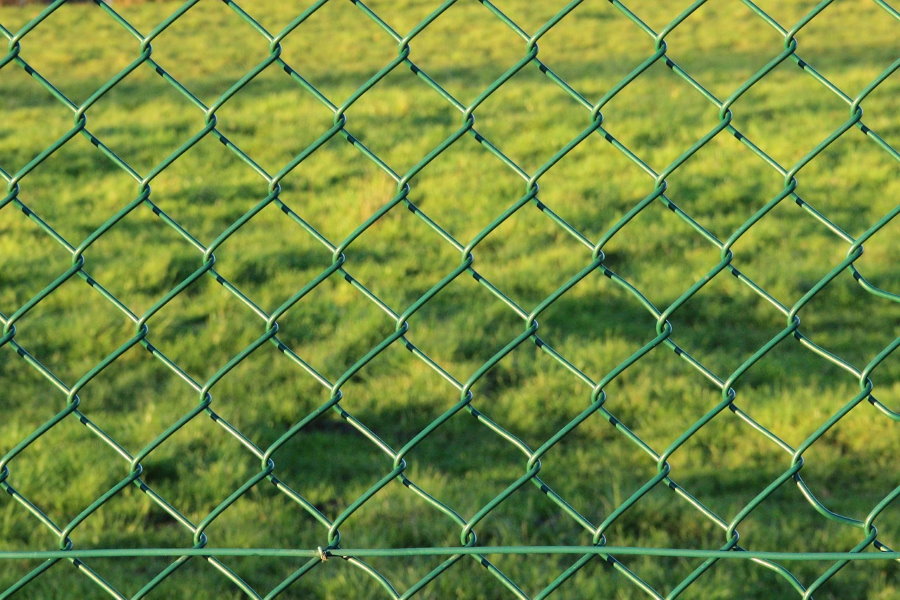
Chain-link fencing is a simple, effective and, as a rule, the most inexpensive way to mark the boundaries of your own site
Benefits of Mesh Fencing
Content
The chain-link is an excellent option for quickly creating a fence, which, moreover, will be quite durable and light. At the same time, it does not block the sun's rays, which does not create excessive shading. But, at the same time, if necessary, you can make the site not visible from the outside by attaching additional materials to the fence structure.

To decorate the mesh, you can use a plastic ribbon
If we talk about the other advantages, it is necessary to note the following:
- This material can be used for a long time.
- The fence made of mesh netting is quite strong and reliable, provided that it is installed correctly.
- Installation and dismantling is quite simple, so the owner of the site can handle it on his own. But it is necessary to comply with all technological requirements.
- Due to the fact that this design does not block the site from the rest of the external territory, visually the area seems larger.
- Affordable cost. This is especially felt with a large area of the site, when the constructed fence is quite long.

Chain-link fencing is perfect as a temporary or permanent solution
But, despite the obvious advantages, there are still certain disadvantages:
- Dirt and dust from the outside easily penetrate the site. This is especially pronounced in the case when it is located directly with the road or other objects that lead to air pollution.
- In some cases, there is discomfort from the fact that the territory is viewed from the outside. But this point can be eliminated using additional materials attached to the netting netting.

The netting is a web consisting of flat spirals twisted together
Varieties of mesh netting
The fence made of netting is the most diverse, depending on the material used and on the method of tensioning and attaching the mesh. So, according to the materials used, there are:
- Un galvanized, which is the cheapest and therefore not durable material. Due to the lack of a zinc layer, the base material undergoes rapid rusting and warping. Such material must be painted immediately after installation and the safety of the paint layer should be monitored. As soon as small chips are formed, rust will appear in this place soon. Therefore, in order to maintain such a fence, it is necessary to periodically update the paint on it. Manipulation is carried out, the rarest, once every 2 years, or even more often.
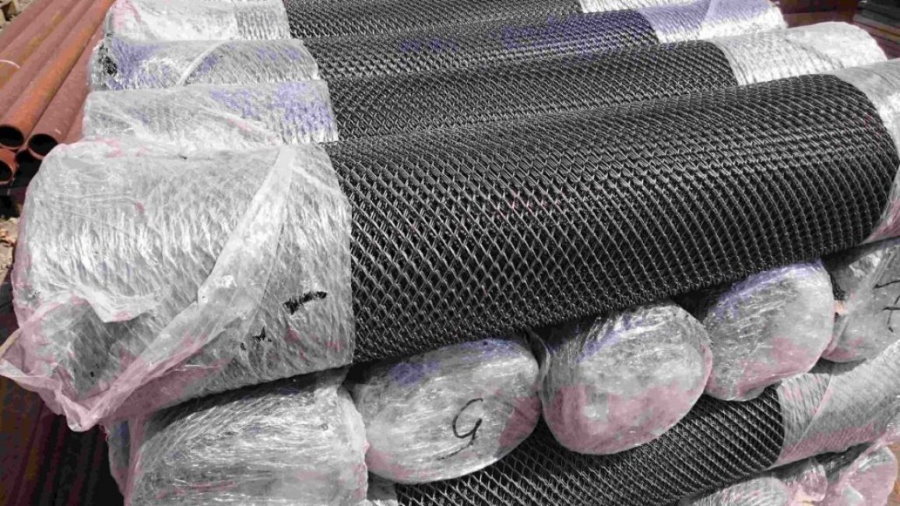
Non galvanized wire mesh has a short life
- Galvanized differs from the previous version in that a zinc layer is deposited on top of the base metal.At a price it is more expensive, but its operation is simpler. This is due to the fact that such a product does not require staining. And thanks to its resistance to negative environmental effects, it can last longer to protect the fence from the galvanized wire mesh.

Galvanized coating extends mesh life by approximately 10 years
- Polymer, it is also called a plastic mesh netting - it consists entirely of polymers. It has a wide variety of color solutions, as well as the size and shape of the cells. Due to its relative softness and low strength, it is used for surveying a site adjacent to the neighboring one. But for the fence from the outside street is most often not used.

Polymer mesh is produced in various colors.
- The plasticized version differs in the type of coating. In this case, a polymer is applied to the metal wire. This is the most popular and high quality material. Due to the special technological polymer material, it is possible to operate the products under the most adverse weather conditions and exposure to aggressive environments.

The combination of the strength of metal with the decorative properties of plastic makes the product the most popular and sought after
When choosing a plasticized mesh netting, it is necessary to take into account the thickness of the wire used for its production. It should be tight enough and not slip when trying to deform it.
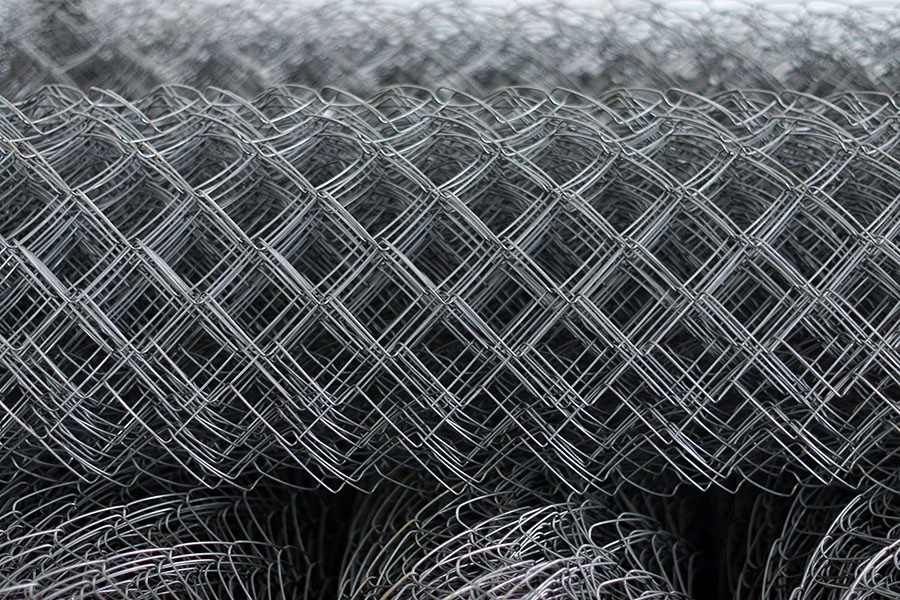
The produced mesh differs in wire thickness, cell size and roll width
Sectional
If we consider the fence of the netting, then it should be borne in mind that in addition to the quality and materials of the mesh itself, there is also a way to fix it during installation. There are options when the grid itself is already mounted in a metal frame. Thus, a section is formed with certain overall dimensions.
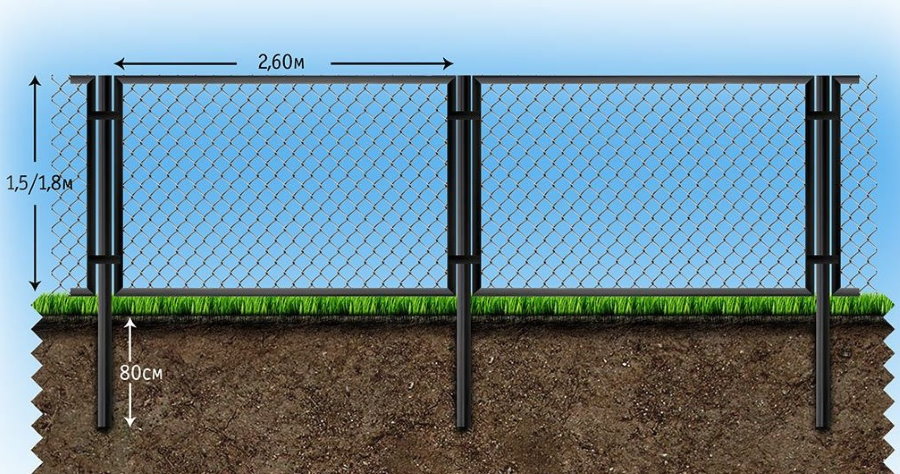
Sectional fence device based on mesh netting
It turns out such a product by welding metal guides and corners, which ultimately form rectangular or square sections. Their sizes most often fluctuate in the following ranges:
- in height from 2 m to 2.7 m;
- in width from 2 to 3 m.

The dimensions of each section largely depend on the thickness of the corners used.
Installation of such a fence is as follows:
- First, the pillars are concreted. It is important to fix them as firmly as possible, since they will bear the entire load withstood by the fence.
- The distance between them must be maintained in accordance with the width of the frame.
- Then the frame is assembled, to which the netting is welded.
- After that, a section with a fixed chain link is welded to the posts.

Concreting pillars to the depth of freezing of the soil will provide a reliable basis for the mesh fence
Some companies offer installation services for such a fence. They also perform the assembly of the section according to the specified dimensions and the installation of the fence directly around the perimeter of the site.
Tension Barriers
Tension barriers are cheaper in cost than sectional barriers. Their installation is simplified compared to the previous version of the fence design.
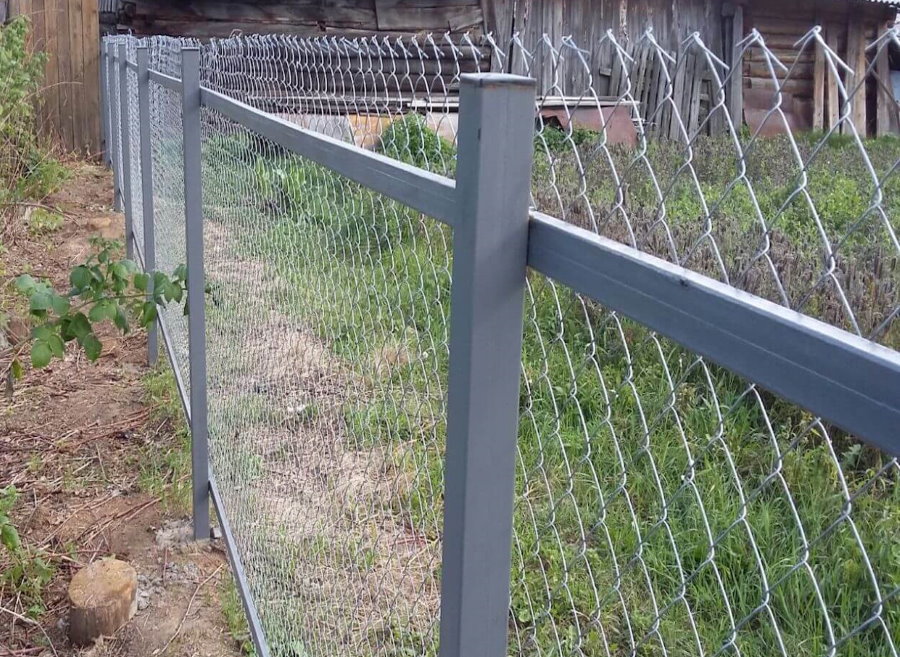
The safety of the tension fence largely depends on the chosen method of securing the mesh
The essence of installation is the following steps:
- Pillars are buried to a depth of approximately 1 m, keeping the same distance between them. As a rule, it is 2.5-3 m.
- Then they unfold the netting and attach it to the installed posts.
- Fixing is carried out using special plates.
Do not make too much distance between two adjacent posts, since in this case the upper part of the netting will sag and try to fill up the whole structure. This is especially evident with gusts of wind.
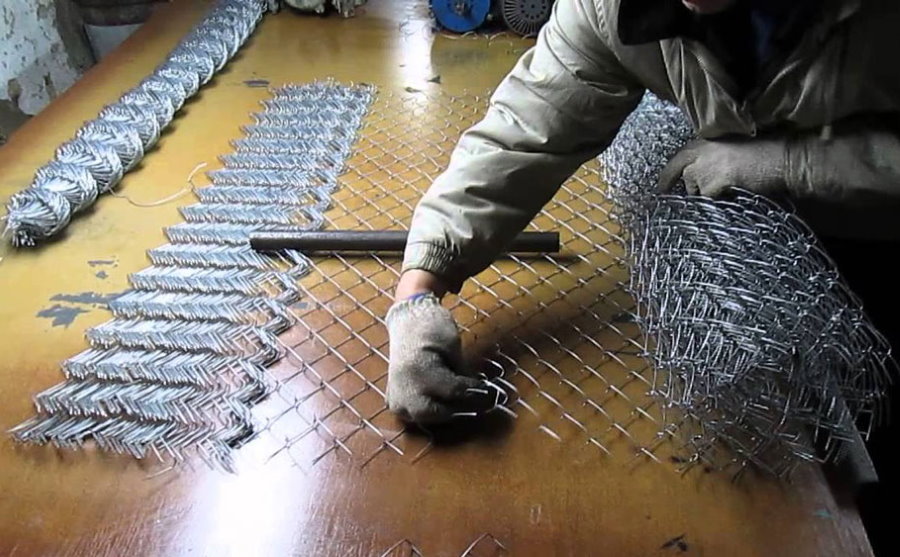
The mesh webs are joined together using an extreme spiral wire

The easiest way to fix the grid on the posts - using wire clamps
It must be borne in mind that the direct installation of the grid to the installed poles is possible in two ways:
- The first is the simplest and most inexpensive - with it, the grid simply unfolds and fastens to the posts without additional fixation along the upper edge.

The easiest installation method is to stretch the grid between the posts
- In the second case, rails are additionally mounted, the so-called sleds. In this case, the entire fence will look more solid. In addition, he holds his shape better. In order to perform this type of fencing, it is enough just to weld the longitudinal guides to the posts along the upper edge (where the upper strip of mesh will be). As them may be pipes or timber. Sometimes a sufficiently dense and thick wire is used.
What to look for when choosing
When choosing fences for summer cottages, the chain-link should be either galvanized or with a polymer coating. So you can forget about the need to change the fence or put it in order for a long time. In addition, it is worth considering immediately which way this material will be best fixed. If there is a need to save money, then it is possible to make a sectional version in the place where the fence goes outside. Whereas the parts of the site bordering on the neighbors can be performed in a simpler version - with a tension wire along the upper edge or just a stretch.

Variant of a fence made of mesh netting on a wooden frame

An example of a chain link fence on a slope of a garden plot
It is also important to remember that an inexpensive fence, most likely, after some time will have to be refined if not changed completely. And this will require additional financial expenses. Therefore, before you get the cheapest design possible, you should calculate everything correctly enough, taking into account the subtleties and nuances. After all, it’s easier to do it right away in quality, than to then invest additional funds in a remake or annual painting.

The mesh fence can be decorated with a pattern woven from thin wire
If there is a desire to protect the interior of the site from viewing from the outside, then polycarbonate material or a camouflage net can be attached to the netting net. They will provide concealment of space from viewing outside.
It is very important to consider that the netting netting is a popular enough material to protect the site. But, before you opt for this material, you must understand all its advantages and disadvantages. Only in this case it will be possible to get the fence that is suitable for a particular case.
Video: How to pull the cable to fix the mesh netting on the fence



